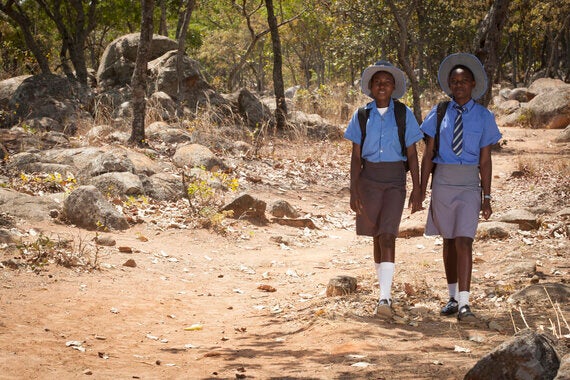
Photo Credit: Jon Pilch, Camfed
In a previous blog, I talked about the changing political climate as a result of the onset of election season in Europe. Further afield, spectators, businesses, and global activists have been talking about a different kind of climate, contemplating what President Trump's stance on the Paris Agreement means for our children, particularly prescient ahead of International Youth Day (12th August). Younger generations are those who are going to be the most affected by present decisions about climate change.
I've also written extensively about leadership in the past. It's something we need now more than ever, because climate change is real, and an ever stronger global response is needed to mitigate its impact and limit a further increase in temperature levels in the future.
In sub-Saharan Africa, for example, climate change is afflicting communities with devastating consequences. In 2016, El-Nino related droughts in Southern and Eastern Africa caused Malawi and Zimbabwe to declare national emergencies, with millions of people facing extreme hunger. This year, communities in Zimbabwe suddenly faced perilous flooding, as heavy rains caused houses and livelihoods to be swept away. In these countries, where Camfed works, most families depend on agriculture for survival. Women make up the largest percentage of the workforce in the sector, but lack access and control over land and productive resources. They are particularly disadvantaged when crops fail, and the vulnerability of their position on the 'frontline' of climate change is sadly only likely to increase. They suffer whilst we prevaricate.
We know that the status and prospects for girls and women are the most important indicator of our world's stability, prosperity, and safety. Critically, a clear link has now also been established between girls' education and the mitigation of climate change. Research from the Brookings Institution shows that "empowering girls and women through a combination of education and family planning is the number one thing the world can do to address climate change, ahead of switching to solar energy, wind energy, or a plant-rich diet" and would result in 120 gigatons of carbon reduction by 2050.
The United Nations projects that the world's population will grow from 7.3 billion today to 9.7 billion by 2050, with most growth occurring in developing countries. In Africa, the population is projected to rise by 1.2 billion people, as high fertility rates meet declining mortality rates. By tackling fertility rates through investment in girls' education, we can achieve the greatest beneficial impact on climate change. Statistics from the World Bank show that the difference between 0 years of schooling and 12 years is almost 4 to 5 children per woman. A quality education, which includes much-needed information and guidance around family planning and female reproductive health, can open up more personal choice and greater financial independence for young women, who will in turn invest in the education of their - fewer and healthier - children.
A case in point are the young educated women in our CAMA (Camfed Association) network, who use their own education to benefit others. They not only support more disadvantaged girls to go to school, but guide young women through sensitive subjects, including sexual reproductive health choices. Importantly, many CAMA members have become champions of sustainable agriculture in their communities.
14 young women who attended a tailored six-week course in Sustainable Agriculture, which we developed with EARTH University in Costa Rica, are cascading their knowledge to thousands of community members across sub-Saharan Africa. In Zambia, the Ministry of Agriculture, so impressed with their knowledge, partnered with Camfed to support them to travel to five districts to spread their expertise amongst farmers in remote areas. And this year, Senior Chief Nkula, Kafula Musungu II of Muchinga Province, made a gift of land to Camfed and CAMA. It will allow young women to practice and teach sustainable agriculture while growing food for school meals, reducing drop-outs due to hunger. And my CAMA sister Esnath, on a full degree scholarship at EARTH University, is planning to create a sustainable farm model to help in the empowerment of rural communities in Zimbabwe.
Together they are showing that the right approach to girls' education creates young rural women who not only have smaller families, but are activists for change - political, personal, communal, and environmental! When leadership is lacking from traditional spaces, a major focus in the global debate on climate change must be the promotion of girls and women's rights in sub-Saharan Africa. All of our futures are at stake.
